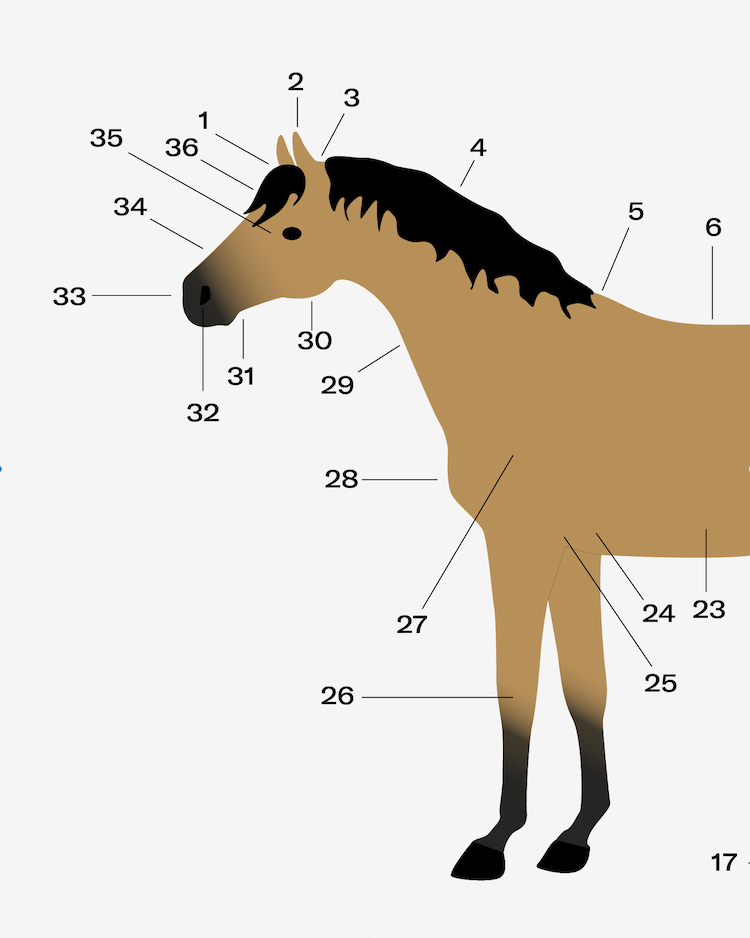Guide:
Horse Anatomy
Confused about equine anatomy? MD is here to help! Check out our article about the horse’s anatomy and health – and download our anatomy chart!
Ellinor
Thu 1 Aug - 24

Guide:
Horse Anatomy
Confused about equine anatomy? MD is here to help! Check out our article about the horse’s anatomy and health – and download our anatomy chart!
Ellinor
Thu 1 Aug - 24
Knowing your horse’s anatomy is key. An understanding of equine physics enables you to properly care for your horse, and it helps you to become a better rider too. In this article, MD guides you through the different body parts of the horse and why it’s important to know them. Also, we share some tips concerning regular check-ins with your horse.
We begin by stating the obvious: Horses are big animals. An adult horse weighs around 400-700 kg (882-1543 lbs), while a pony weighs somewhere between 130-400 kg (287-882 lbs). Draft horses? Typically, 800-1000 kg (1763-2204 lbs). To be able to fully handle and take care of the horse in its entirety, a certain amount of knowledge concerning their anatomy is essential.
Why You Should Care for Horse Anatomy
Horses have different body types and come in different sizes depending on, for example, breed. Each horse’s exterior traits cause them to be more or less suitable for certain types of work. If a horse’s anatomy matches the specific efforts their rider wishes them to make, then the outcome of their practice may be more successful. Likewise, by knowing your horse’s anatomy, you can make informed decisions regarding what type of training your horse needs. This also reduces the risk of overexertion, and you secure a healthy, durable horse.
Daily Check-in
To be able to assess the general condition of your horse, daily visitations are commonly recommended. This way, you get to know your horse and how they are doing. When you are familiar with your horse’s anatomy, you can detect changes in their body or behavior with more ease, and possible injuries can be spotted earlier on. The benefit of this is, of course, that it can prevent serious or permanent damage.
How to Examine Your Horse
Examine your horse by using your hands (no gloves on!) and feel through their coat from head to hoof. Look for cuts and wounds in the coat, and parts that are unusually warm, swollen, or sore. Pay attention to body posture, examine if the nostrils are runny or the eyes dim, and listen for uneven breathing. Normal breathing for a horse in resting condition is approximately 8 to 15 breaths per minute.
Here to Help: Maya Delorez’ Horse Anatomy Chart
Familiarizing yourself with the terminology of horse anatomy means you can more easily discuss your horse’s health. Therefore, we at MD made a handy chart of the equine anatomy for you! Why not use it to practice the terminology of the horse’s body parts, or keep it as a reminder to check in with your horse? Print it and put it up in the tack room, why don’t you?
💡 Disclaimer
The following is a selection of anatomical terms. There are tons more, and their names may vary in different parts of the world.

You can download the chart here.